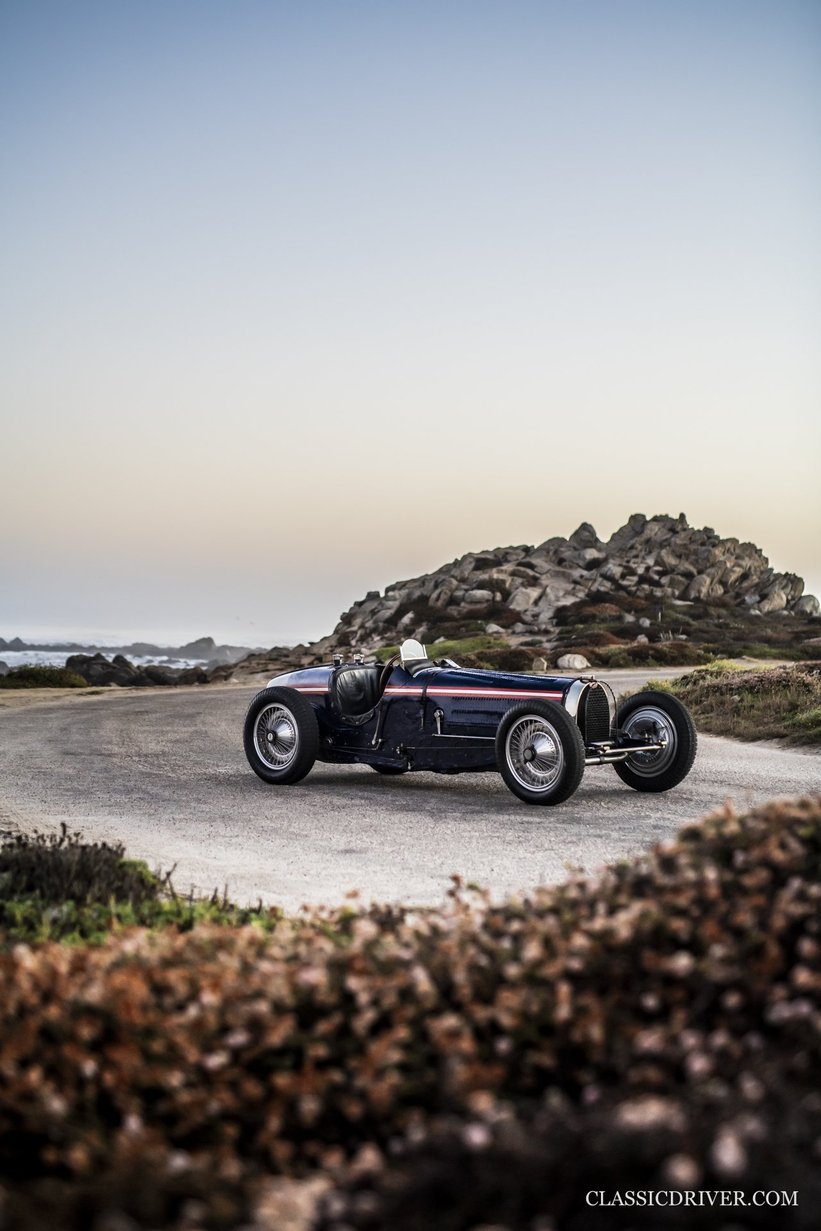
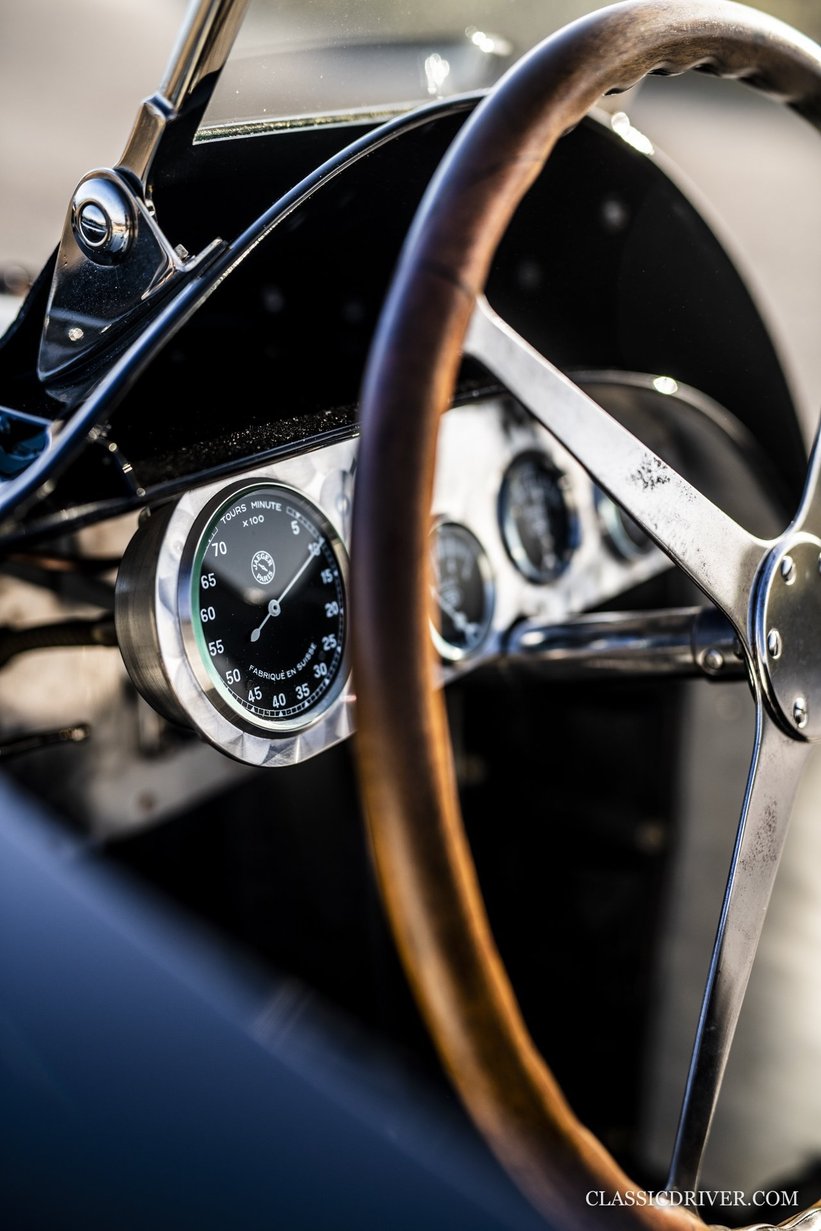
In the fabled legend of Bugatti’s racing cars, there is one model that is so beautiful and so elusive that is stands at the top of every enthusiast of the great French marque’s wish list: the Type 59. Along with the input of Jean Bugatti, who had been one of the driving forces behind the introduction of the twin-cam engine, Ettore Bugatti created the ultimate expression of his jewel-like Grand Prix car.

The Type 59 was by no means Bugatti’s most successful car, but it just excels in so many areas. Its long, low and slender bodywork, intricate design features such as the ‘piano-wire’ wheels and rarity (just seven were built in Grand Prix configuration) elevate it not only above its predecessors but also many of its contemporaries. The timing of its arrival, just before Bugatti’s demise, only serves to heighten its desirability today. Current owners include Ralph Lauren and the industrial designer Marc Newson – need we say anymore?


It is some 15 years since Hugh Conway’s book on the Bugatti Grand Prix cars was published, a tome that provides a good overview but lacks authoritative information about the Type 59 specifically. The longstanding Bugatti historian Julius Kruta has therefore teamed up with the world’s leading Bugatti Grand Prix expert Mark Morris and journalist Mick Walsh to create the definitive book on the Type 59, scheduled to be released in early 2021.
In what was an astonishing feat of persuasion and logistical wizardry, Kruta managed to gather all four remaining Bugatti Type 59s for the first time since 1935 in Monterey last summer for a genuinely once-in-a-lifetime photo shoot, the results of which will end up in the book. Rémi Dargegen, a man who makes no bones about his love for Bugatti (he has a Type 35 tattooed onto his arm) was granted the chance to capture the momentous summit. And Kruta has kindly allowed us to publish some of the magical photos here on Classic Driver for you all to enjoy. Over to you, Julius…

How did your passion for Bugatti kindle?
My passion for Bugatti started in the United Kingdom in the mid-1980s. I spent quite a lot of time in England when I was young, either on summer holidays or school exchanges, and the family I stayed with took me to a Bugatti Owners’ Club meeting at Prescott Hill Climb. It was like going back in time and I quickly realised that Bugattis were different from all the other vintage cars. Take the aluminium wheels and the multitude of eight-cylinder inline engines, for example – Bugattis were always the connoisseur’s choice.
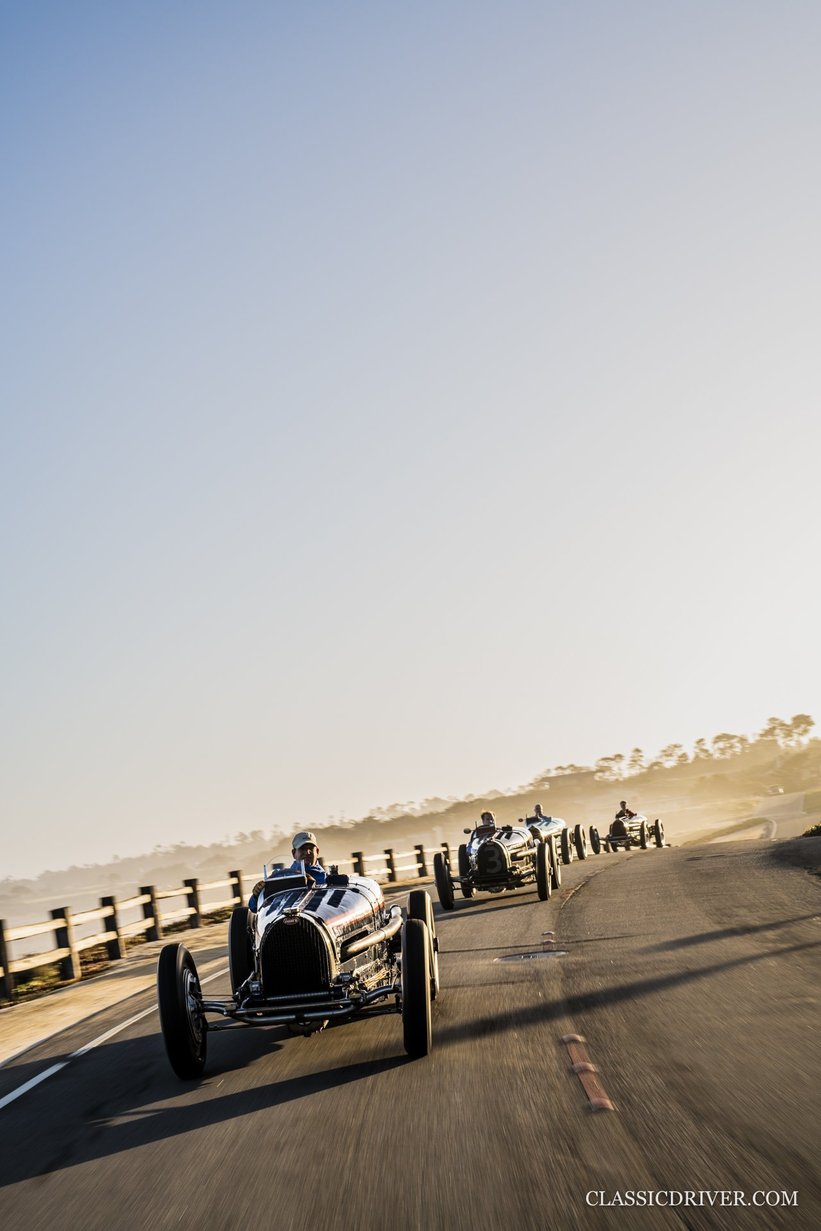

Did you endeavour to learn more about the marque from then on?
Absolutely. In the 1920s and ’30s, virtually every French car manufacturer was in Paris. Only Bugatti wasn’t, but then Ettore Bugatti wasn’t strictly a French manufacturer. He was an Italian entrepreneur who started his company in Germany but wound up in France by accident following the First World War. Interestingly, it was Bugatti’s English customers who revered Ettore the most, regarding him as some sort of demigod. So, you can say that the four major automotive countries in Europe – Italy, Germany, France and England – are all woven into the legend of Bugatti.

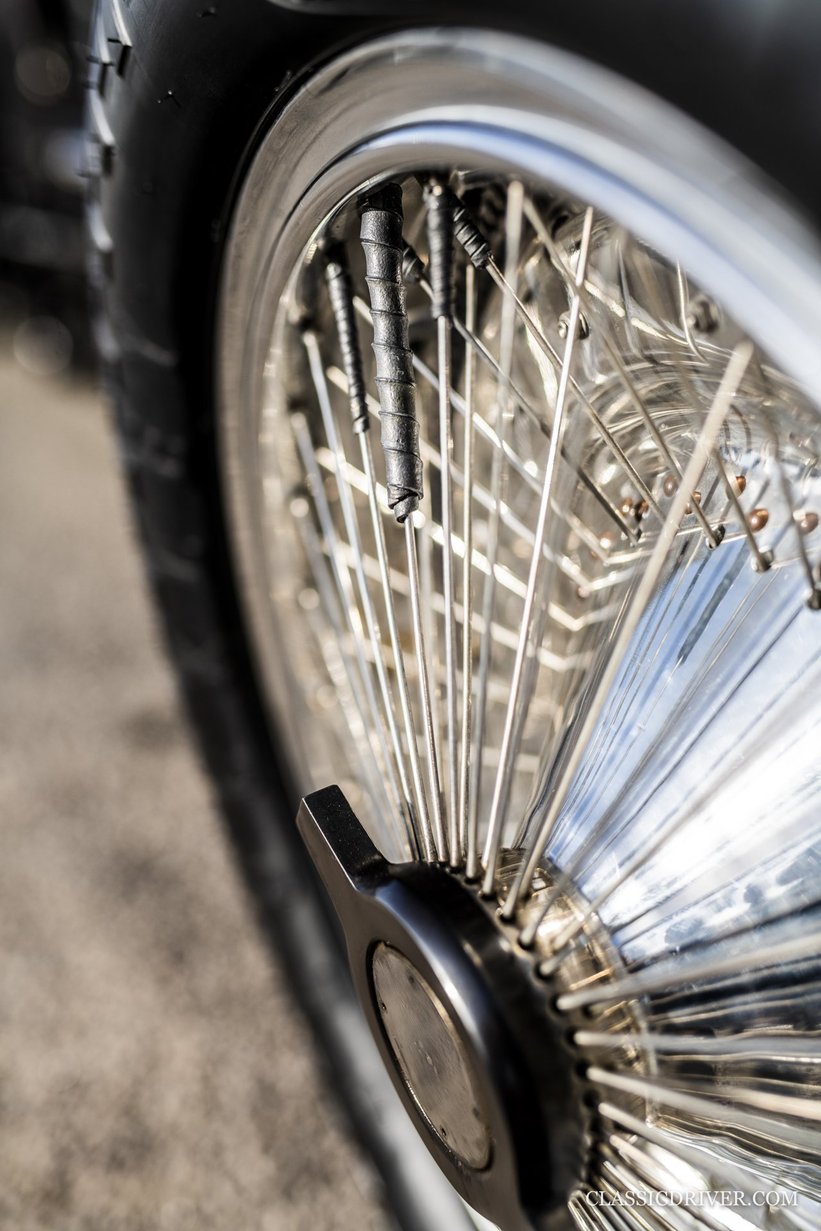
How did you wind up joining the Volkswagen-owned Bugatti?
It was a complete coincidence. I spotted a few errors in the history file at the back of the press kit for the Bugatti EB218 concept, which had been shown at the 1999 Geneva Motor Show, and I phoned Bugatti and told them. They invited me to Wolfsburg and said they needed somebody to teach them about the history of the brand. They asked if I wanted to do my university thesis about the company and I joined full-time shortly afterwards in 2001. I was the very first employee at the ‘new’ Bugatti in Molsheim and I was doing everything from meeting clients and dealing with journalist to going on classic car rallies in China and overseeing our Pebble Beach presence. I headed the heritage department until 2018.

You’ve decided to write a book about the Bugatti Type 59 – could you tell us what’s so special about the car?
The Type 59 is an anachronistic car. It’s the swansong of the Bugatti Grand Prix car, but it wasn’t particularly successful – it won just a single race, the Belgian Grand Prix in 1934, though only because the two leading Alfa Romeos crashed into each other and the Mercedes team got stopped at the border. That was the last major Grand Prix win for Bugatti.
The Type 59 was romantic because it still retained the heritage of the iconic Type 35, which Ettore Bugatti had designed in 1924, only it was updated with a more powerful blown double-overhead-cam engine and a lower bodyline. But in extending the wheelbase of the new chassis frame, he created an utterly, utterly beautiful Grand Prix car. Proportionally, it’s perfect – there are not many people who can agree on a shape, but the Type 59 is generally regarded as a masterpiece. And the details are stunning. Take the very special ‘piano-wire’ wheels, for example, and the car’s pronounced riveted spine on the tail section. It’s like a fine complicated swiss watch, a joy to the eye and beautifully detailed. Some may call it a piece of art, but to me it is more than that – especially when its engine comes alive!
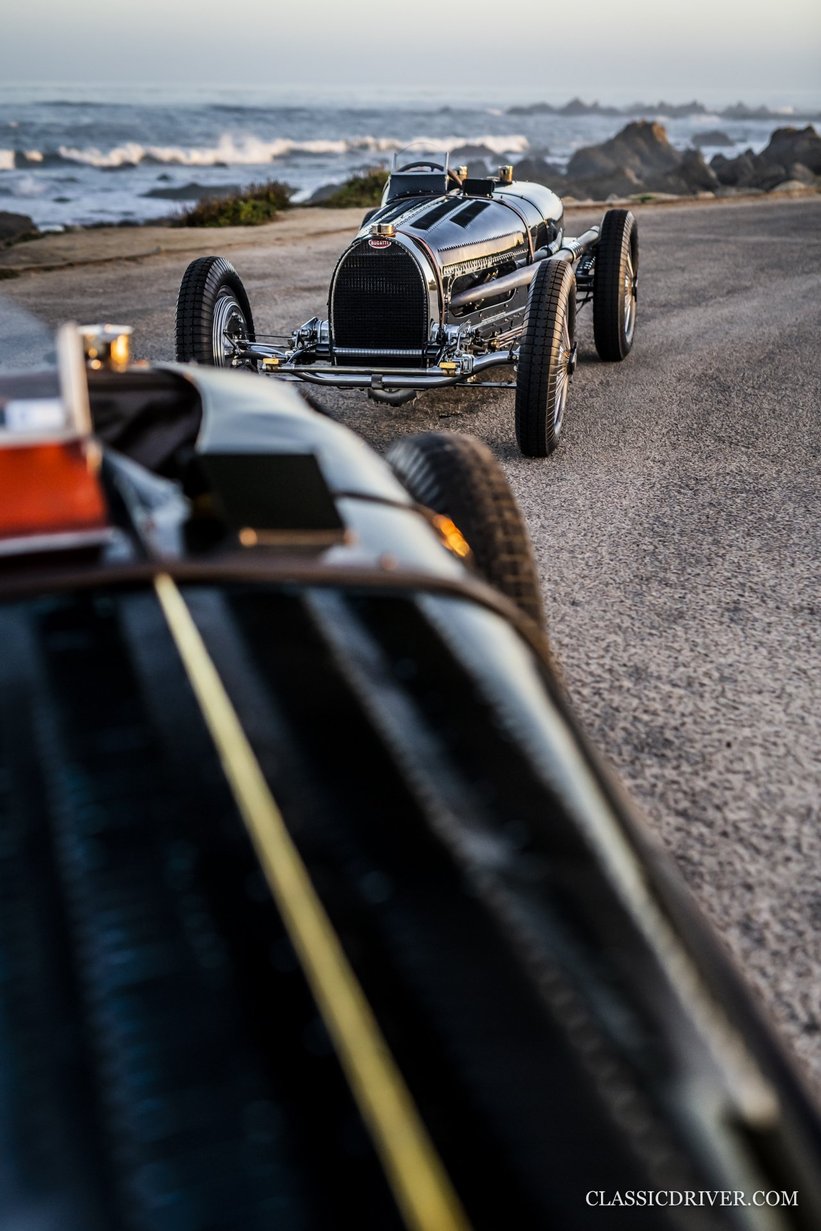

Why are you writing a book about the Type 59?
The idea for the book came about because despite there being many works which cover Bugatti’s Grand Prix cars, there is not really a vast amount published about the Type 59. Because the Type 59 chassis was also used for several other cars including a Works-prepared sports car, we wanted to create a book that sets straight the period from the mid- to the late-1930s. It will be the first and last book on the subject – exhaustive in detail and including the car’s development history verified by original factory records, individual chassis histories, pre-War race records, and many previously unseen photos. It has to be to the book world what the Type 59 is to the Grand Prix world. It will be beautiful and useless, something that nobody can say does not touch them.
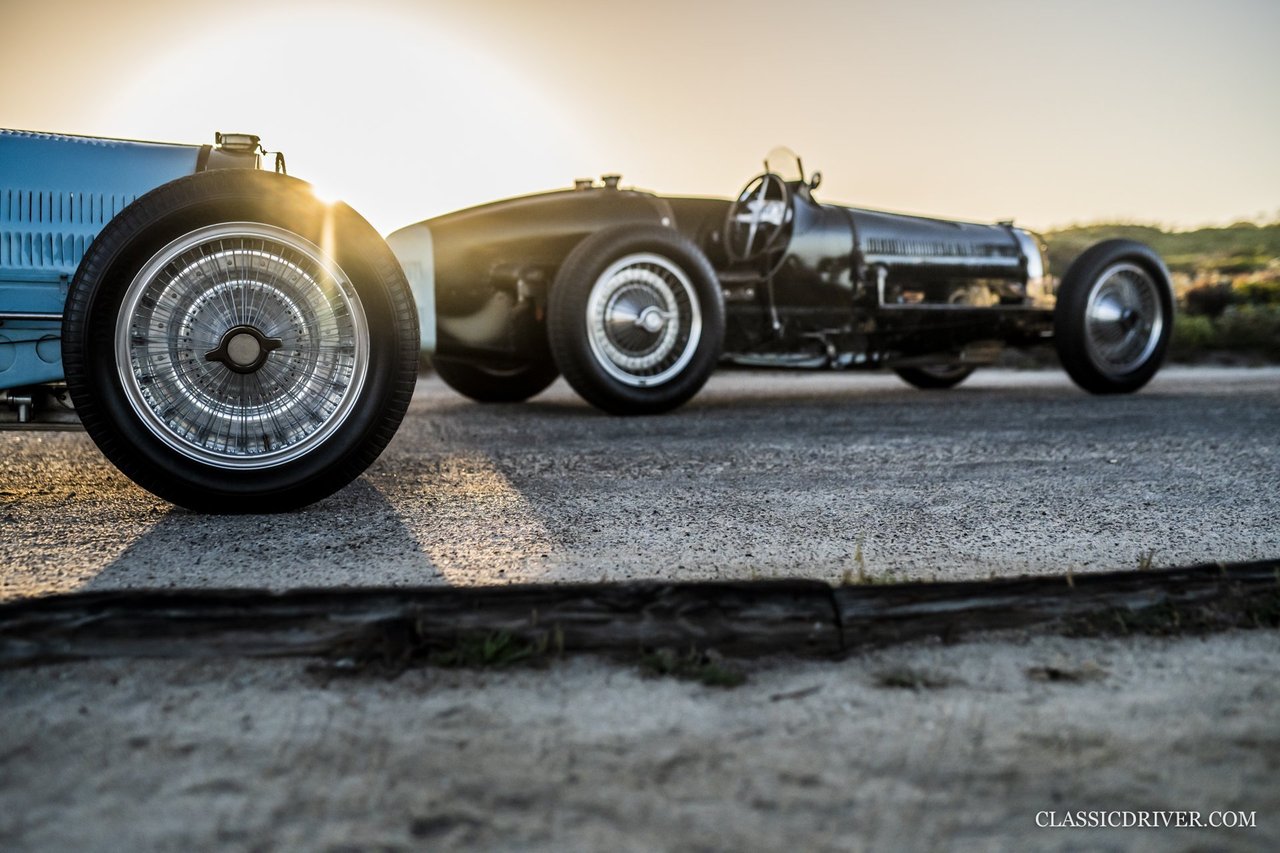
In Monterey this summer, you assembled all four Bugatti Type 59s for the first time since they raced together in 1935 – could you tell us about this historic meeting came about?
All four of the original Type 59s that raced for the Works in the 1933 and ’34 seasons were sold to gentlemen drivers in England and they’ve all survived to this day – one’s still in England, one’s in Germany and two are living quite close to each other on the East Coast of America. For the sake of the book, we had the idea of bringing all the cars together just once, which we did at Pebble Beach earlier this year. Two owners were rather easy to convince, while the other two were not – I travelled to one owner five times in order to get the car to Monterey. While I’d like to gather at least two of the cars when we launch the book, I doubt we’ll see all four together again in our lifetime. The reunion would not have been possible without the Pebble Beach Concours d’Elegance. Only an event of such prestigious standing could convince the owners of these masterpieces to bring them back together.


So, how was it?
Well, it very nearly didn’t happen! Early on the Friday morning of Car Week when we were due to meet, one of the cars was stuck in the International Tent at Pebble Beach and it took a lot of persuading to get the car out by 5am. Having got the concours’ chief security guard out of bed to release the car, we got to China Rock just before sunrise. But Ralph Lauren’s Type 59 was missing – I called everyone in the Lauren camp I knew and they reassured me the car was on its way. When that fourth car appeared on the horizon it was such a relief – like a gift from the Gods, we had completed our challenge!
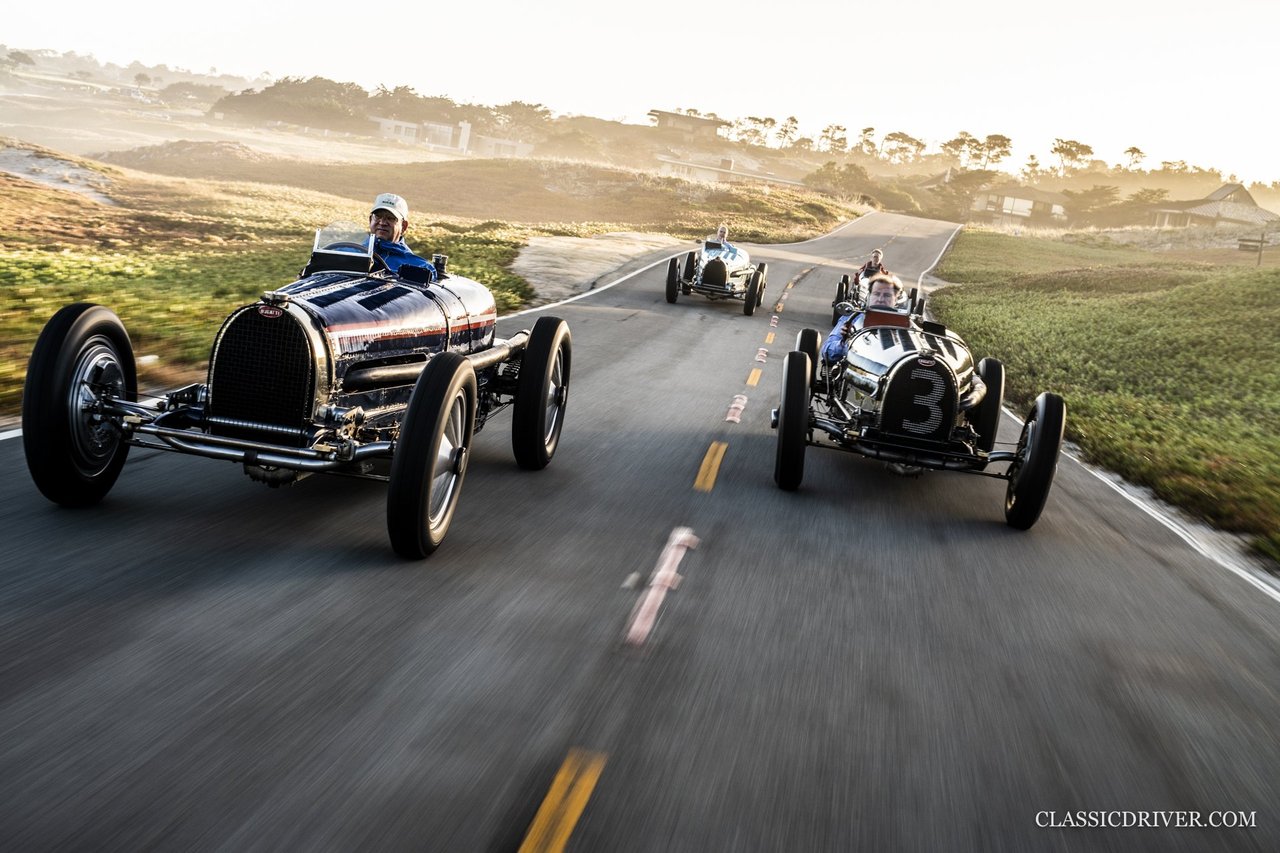
Could you describe the driving experience?
I’ve driven all sort of Grand Prix Bugattis and they’re all lovely cars that handle well, accelerate nicely and are easy to stop. But you’re never afraid of them. I didn’t expect the Type 59 to be quite so fast – it’s even easier to drive than a Type 35, but you’re sitting lower and there’s that impossibly long bonnet, so it’s a bit more intimidating. Saying that, it’s like a new Porsche 911 in that everything feels vaguely familiar. If the Type 35 is a Carrera, the 59 is a Turbo S. It also makes a fabulous noise.
Photos: Rémi Dargegen © 2019
































